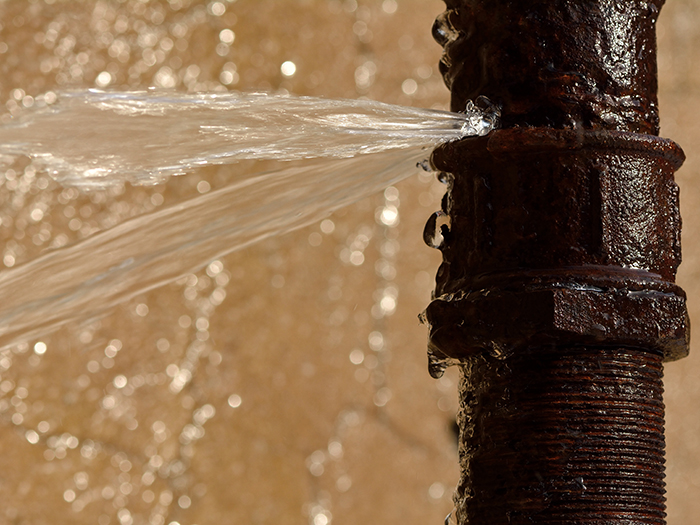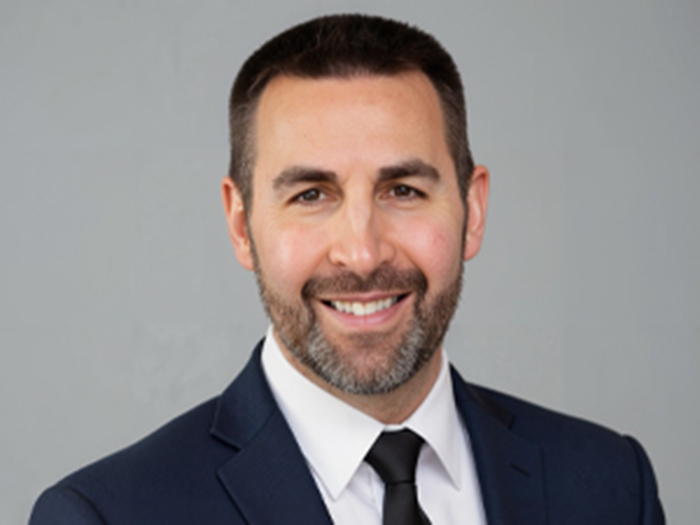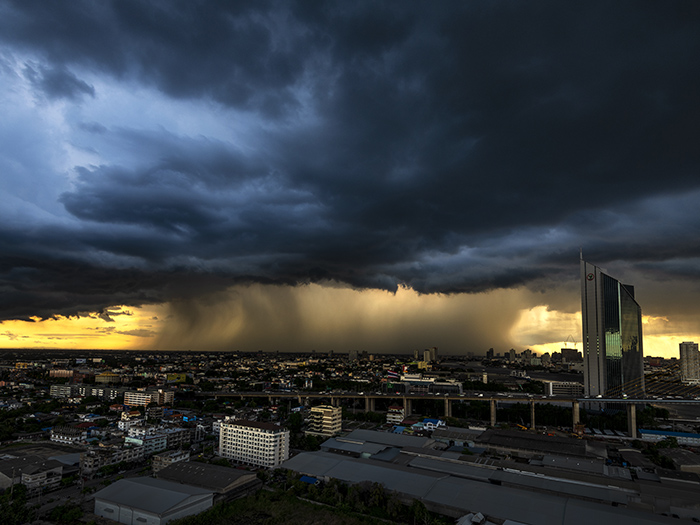Sponsored Content by Engle Martin
7 Areas to Watch During a Water Mitigation and How to Get a Fair Price

Anyone who has dealt with a flooded basement understands the difficulty of remediating water damage, which constitutes 30% of all property insurance claims. Thoroughly drying out any wet materials is critical to avoid secondary damage. Depending on the severity of the damage and the size of the structure affected, this process can take several hours to several weeks and cost anywhere from a few thousand dollars to millions.
Emergency water extraction can be done by any local contractor. Although specialized training and licensing does exist to signify contractors with expertise in water mitigation, they are not required. This opens the doors for opportunistic contractors to potentially overcharge customers for unnecessary or sometimes nonexistent work.
“Since there are no licensing requirements, someone has to ensure that the work completed and the price of that work were appropriate for the damage,” said Rob Foster, Lead Water Mitigation Analyst at Engle Martin & Associates, a leading national independent loss adjusting and claims management provider. A former contractor himself, Foster is an IICRC-Certified Master Water Restorer, Master Fire and Smoke Restorer, and Master Textile Cleaner.
“My responsibility is to audit water mitigation invoices for compliance with the IICRC S 500 standards and assess whether the charges are acceptable and can be paid as an indemnification to the insured,” he said. No insurer, for instance, wants to pay for $50,000 worth of work when the same outcome could have been achieved for only $10,000.
After conducting a multitude of water mitigation audits, Foster identified some of the most common areas of leakage:
1) Charging an “After-Hours” Rate During Normal Hours

Rob Foster, Lead Water Mitigation Analyst at Engle Martin & Associates
Normal working hours are generally considered to begin at 8 a.m. and end at 5 p.m. For any work done outside of that time frame, a contractor could charge an overtime rate for labor – often 1.5 times higher than their normal price.
Some contractors may, intentionally or unintentionally, charge an after-hours rate even during normal business hours. On a few egregious occasions, contractors have kept their workers on-site longer than necessary in order to fairly charge the higher rate.
2) Billing for Oversized Equipment
Extraction units, de-humidifiers, and fans are all necessary pieces of equipment used to dry out water-damaged structures. However, the size and power of this equipment varies. Standard gear may suffice for 1,000-square foot basement with half an inch of water on the floor, but a heavily damaged commercial complex could demand a much larger, industrial-sized piece of equipment.
“For example, a standard de-humidifier rents for about $65 a day, while an XL de-humidifier rents for about $105 a day. If a contractor installs a standard de-humidifier but charges for an XL, that’s $40 per day that shouldn’t be charged,” Foster said. It may seem like a small difference, but if a large property has multiple de-humidifiers running for a week or more, the extra dollars quickly add up.
3) Custom Pricing for Standard Work
Under special circumstances where contractors must go above and beyond to do a large job quickly, custom pricing may be warranted. Disaster response would be one such example. The need for additional labor, materials, and equipment justify the extra expense – but this should not apply to more standard losses.
“In one case, the contractor charged 92 cents per square foot to extract water from a hard surface which typically runs 20 cents per square foot, according to standard pricing for that area. If you’re dealing with a 100,000-square foot warehouse, that 72 cents over charge is a significant amount bringing the total to $72,000” Foster said.
4) Inflating Overhead and Profit Fees
Overhead and Profit, or “O&P,” typically appears as a single line item on a contractor’s invoice and is often priced at 20% of the total job estimate. When subcontractors are involved, the lead contractor often charges O&P as compensation for their role as supervisor and coordinator. While O&P may be a reasonable charge in some instances, Foster has seen contractors pricing it as high as 30% of the invoice total. There’s a difference between being paid fairly for acceptable work and overbilling,” Foster said.
“The insurance industry generally takes the view that if there are fewer than three trades, there is no requirement for O&P.”
5) Charging Extra for Advanced Technology
New technology like infrared and 3D cameras are helping water mitigation contractors do their jobs more thoroughly and efficiently. Since these tools can be costly, some contractors offset the expense by charging for their use of the technology separately. For example, charging every client $100 for use of a $500 infrared camera will quickly begin earning the contractor an unwarranted profit.
However, modern, advanced, or expensive the equipment might be, they should still be treated like any other necessary tool in a contractor’s toolbox. “You wouldn’t charge for a screwdriver or hammer therefore you shouldn’t be charging for an infrared camera,” Foster stated.
6) Exaggerated Mortgage Fees
When an insurer pays a water damage claim, the mortgage lender for the insured’s property and the restoration contractor must both endorse the check. Some contractors will charge an additional processing fee for the trouble of sending the check off to the mortgage company, obtaining their approval, and returning the check to the insured. “There is no justifiable reason for such exorbitant charges when the action taken by the contractor is so simple,” Foster said.
7) Blanket “Cover and Protect” Charges
Removing water and repairing its damage can be a labor-intensive job, especially if contractors need to cut into walls and ceilings. To protect furniture and other materials from dust and debris, contractors lay down plastic sheets. The cost of this material is passed on to the customer in the form of “cover and protect” fees. The charge is fair, as long as contractors are honest about how much covering and protecting they really did.
“I have seen contractors billing for the entire square footage of a space, even if they did not cover the whole area,” Foster said. Say a facility has a 5,000-square foot basement that’s empty except for five filing cabinets that take up 30 square feet. The contractor may still charge 20 cents for each of those 5,000 square feet, even though they only covered the 30. “The contractor should have some documentation to show that he or she did exactly what their invoice says they did,” Foster said.
What to Look for in a Water Mitigation Auditor
When work is done correctly and at the appropriate price, the claims process goes that much more smoothly. Contractors get paid quickly, insureds are made whole, and everyone can move on without frustration. The landscape, however, has become crowded with inexperienced contractors and minimally trained auditors as demand for the service increases. More frequent and severe flooding, for instance, have made water damage and mold top property concerns for insureds and insurers alike.
Companies should seek auditors who not only have experience in water mitigation contracting but are also trained insurance adjusters. This experience ensures the auditor knows exactly what type of work is appropriate, what price is fair, and what questions property insurers will want answered.
“Only adjusters have the authority to negotiate pricing with contractors and effect changes on the invoice. Auditors who are not adjusters can only make recommendations,” Foster said. Foster leads a team of water mitigation analysts at Engle Martin & Associates, all of whom are licensed adjusters and receive specialized training in all aspects of water mitigation auditing.
“My job at the end of the day is to ensure impartiality for everyone involved. I want to make sure insureds get what they need to return to pre-loss conditions, and that the work performed is adequately paid for. I’m not here to cut invoices,” Foster said. “At Engle Martin, our core philosophy is to live by the tenants outlined in our mission statement and treat our customers with the upmost care and compassion.”
To learn more, visit www.englemartin.com/water-mitigation-auditing-services/.
This article was produced by the R&I Brand Studio, a unit of the advertising department of Risk & Insurance, in collaboration with Engle Martin & Associates. The editorial staff of Risk & Insurance had no role in its preparation.










